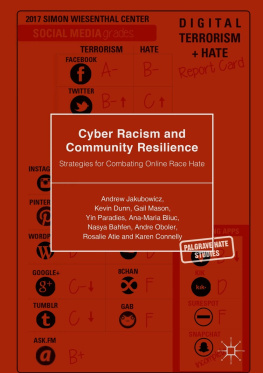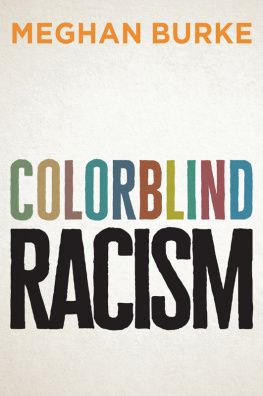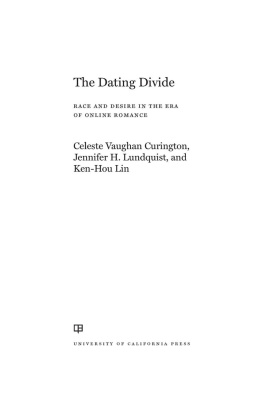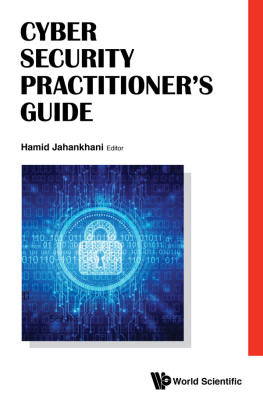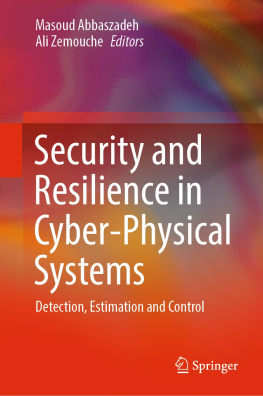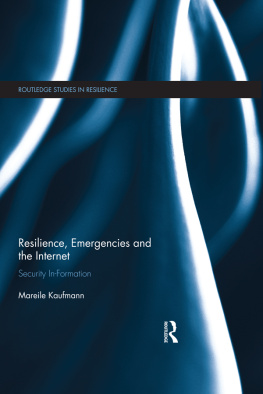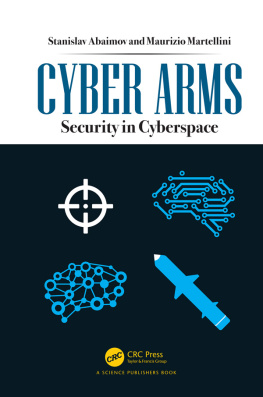Word and Deed
The cyber world and the world of action are not distinct. On January 29, 2017, a Canadian student attacked a mosque in Quebec City , murdering six worshippers. A lexandre Bissonnette (Narayan ) reported the case of a local White supremacist Michael Holt who had pleaded guilty to stockpiling weapons in preparation for a mass rampage in a local shopping mall. He was not known to have been directly connected with any White power group, but had been actively involved in online hate speech. He had also searched the Web, constantly in pursuit of information about what he should believe and how he should act. There is no doubt that the opportunities afforded by the online world have expanded the reach and impact of race hate across the planet.
From the earliest appearance of the Internet as a publicly accessible network of communication, individuals and organisations with radical racist agendas have seen it as their natural hunting ground (Richardson ). American White power groups, Islamist crusaders, anti-Islamic crusaders, European neo-Nazis, alt-right anti-Semites, Australian ultra-nationalists and revanchist separatist groups using race or ethnicity as their imaginary nirvana have all discovered the almost endless possibilities of community, networking, secret communication and anonymous targeting of enemies. The Internet has too often attracted users who want to access it as a place to pursue the targets of their hate, described by one of our research subjects as people who want to twist in the knife.
This book reports the results of a five-year study of the evolution of racism on the Internet, mainly in Australia, but always within the borderless reality of global cyberspa ce. It describes the way in which the Internet has afforded the opportunities for racism to grow, spurred on by the intimate relationship between technology, economy and powe r that underpins this transformation of global realities. It explores how cyber racism er odes trust and the un derpinning of social cohesion in multicultural societies. It concludes that this erosion can only be met by strategies that build commu nity resilien ce.
In the first chapter, we lay out the broad political economy of race and the Internet. We explore the structure of technology, economy and power that has come to be realised in the emergence of the transnational super-corporations within whose structures and through whose products and services racism occurs. We then drill down to the next level, where processes of regula tion form, are resisted and transform. We look at how things have changed since the major studies undertaken in the first decade of the century have been overtaken by new technologies, new questions of regulation and new environments of racialised conflict and racial empowerment.
How the Internet Began to Grow Opportunities for Racism
As a networked transnational and in some ways post-national global society, cyberspace has shown the presence of racism as one of its most easily recognisable features. It is scarcely possible to enter any sector of the contemporary social media world without tripping over an image, meme, video, Instagram post, Facebook page or Tweet that uses racialised difference to demean or intimidate somebody or some group. It may be done with humour, introducing a joking relationship of power between the perpetrator, the bystanders and the targets or victims. It may ooze unconsciously out of the preferences expressed and the messages left on dating sites. It may stridently announce itself in the self-aggrandising websites, blogs and Facebook pages of individuals whose pride in their communal heritage has transformed into the systematic abuse of people who differ from them. It may exude from thousands of trolling tweets on Twitter, where racist and sexist abuse have become some of the more problematic and unattended consequences of un-bordered communication. But wherever it flows, its intent is hurt, an d its aspiration is humiliation.
Racism is a relationship between people who are defined in some sense by their genotypes, phenotypes or cultureswho their parents were, what they look like and how they live their lives (Lentin ). Racism erodes the perpetrator and corrodes the victim; it distorts economies and limits opportunities; it lessens social development and shortens lives. It can produce in all parties to the relationship an increasingly destructive process of aggression, leading, in some cases, to violence and murder.
Racism today cannot be understood without understanding the Internet; the Internet today cannot be understood without understanding racism (Daniels ). Over the past 15 years, a number of insightful studies have shown us how the development of the Internet has been so inflected by racism. In North America, the analysis of global White power and its local manifestations, or, perhaps better, the spread and infilling of White power into the interstices of the spreading Internet, has developed as a key point of intersection for committed scholars concerned about future tendencies in intergroup conflict.
The concept of cyber racism has its origins in research by Les Back in the UK early in the period of the Internet (Back , p. 631) in order to move beyond what he saw as sterile conversations about Internet censorship, and technologically unattached explorations of cultures of fascism.
He deployed the notion of cyber racism to encompass a range of sub-cultural movements, which commonly contain rhetorics of racial, national or sectarian uniqueness and common destiny, leavened by ideas of racial supremacy and separation, fed by a repertoire of racial otherness and sustained usually by a utopian (or dystopian) worldview (Back , p. 632). Back focused on documenting the emergent culture of White power , in particular its globalisation, through the sharing of discourses of whiteness. White was defined against the Jew, the Black and the mongrelised races, reinvigorating the once-thought dead stereotypes and imagery of Nazisms targets, and circulating them widely to new audiences and across national borders. Moreover, Back was able to show how, importantly, the Internet had provided culturally supportive spaces for racists, such that when one of Backs subjects abandoned White power , the activist was bereft. Intense, competitive but short-lived seemed to be the cultural attraction for some people of life in online White power communities.
Back also raised the role that the technology of the Internet played in squeezing time and space, and thereby intensifying schismatic tendencies within and between racist groups. Moreover, he was extremely prescient in his predictions, albeit he did not imagine the explosion generated by Web 2.0 and the growth of social media . The real danger is perhaps that in the informational age isolated acts of racist terrorism may become commonplace (Back , p. 642). Breivik, Bissonnette and Holt ar e ju st three of those who trod the road that Back fearfully foretold.

